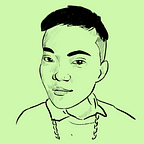Here’s a fun new challenge that I just made up: I’m going write a reflection every 3 years to document my personal growth and see how my design process changes.
Document everything
I have been in sooo many meetings where everyone’s staring at the product with a blank face, wondering why we made certain decisions.
Design education focuses primarily on creating UX artifacts, but not on maintaining, updating, and iterating on them. It takes diligence, but I’ve realized it’s worth taking time to write the brief and record reasons behind design decisions.
You can’t force human behavior
After conducting usability testing and realizing people find xyz confusing, it’s really easy to fall into the trap of trying to nudge them in the direction you want them to go.
However, more help text will not change how people naturally behave. Rather, the usability testing should reveal people’s mental model so that we can use that as the foundation of the product.
Build in accessibility from the start
Realizing that a lot of my designs are inaccessible was a rude but very necessary awakening. I’ve learned that I need to ask myself certain accessibility questions from the very start of designing a feature. Can colorblind people understand it? Does it have sufficient contrast? Does it provide error handling support?
It ends up being a lot easier to integrate accessibility into my workflow, rather than ignoring it, discovering problems later, and filing a JIRA ticket that may or may not be addressed.
It’s worth knowing some code
I get that there’s an ongoing debate about whether designers should code. Some adamantly say no and some adamantly say yes. I think that it’s worth knowing enough so that I can communicate with developers and have a realistic idea of what they can build.
Always go back to the problem
A question I have gotten into the habit of asking is, “What is the problem this is trying to solve?”
By framing design with problems rather than solutions, I think it does a better job of steering the conversation to finding the right solutions. And sometimes, those questions will make the team realize it’s either not solving the problem correctly, or there wasn’t a problem there to begin with.
Notice daily interactions
I am realizing that some of the best design education I can get is by simply observing the built environment around me. That map is very elegantly designed. This ATM machine is awful. This app just gave me 5 pop-up’s in a row. How would I improve this, if I were the designer?
Lately, I am fascinated by sci-fi interfaces for how sleek they are, analog Laundromat interfaces for their use of content strategy, and cashier interfaces for how goddamn horrible they are.
Design alone cannot fix structural inequity
I should note, designers can and will make a positive impact. Just today, I heard a nonbinary designer removed a mandatory gender question on their product’s form. That dope!
(Gender questions usually conflate gender with sex and only provide binary options. They are highly unnecessary, misgender many people, and are unfortunately everywhere. That’s why this is a win.)
However, a well-designed interface will not stop Amazon from assisting ICE in detaining undocumented people, or Facebook from unethically mining our data to help elect a Fascist state, or Microsoft from perpetuating U.S. imperialism by providing cloud services to the military.
I think there is a false narrative that design is the magic solution. Actually, design is oftentimes the problem. I think more people in the industry need to be actively discussing and challenging these issues.
It’s just a job
I love being a designer. That doesn’t mean I should sacrifice my health or personal time for it. Throughout my years of formal education I was somehow instilled with the belief that my career defines me and is the most important aspect of my life.
The reality is that it doesn’t, it’s just a job, and a job is a way that I provide for myself. I’m lucky to work in a craft that I really enjoy, and I can say with confidence that I would probably be a designer even if capitalism did not exist.
My goal is to produce quality work while maintaining healthy boundaries.
See you again in 3 years, we’ll see how much I’ve changed. :)
